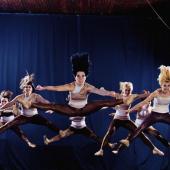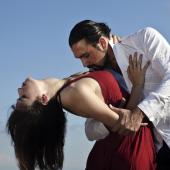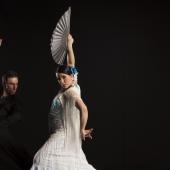Chhau Dance
Chhau is a traditional Indian dance theater. The elaborately-made masks made of paper mache and clay show in several colors different characters as gods, mythological figures, demons, humans, animals and celestial bodies like the sun or the moon. The characters come to life on stage through colorful dances with varied content.
The East Indian Chhau dances can be divided into three regional traditions that differ significantly in match practice: The traditional "Seraikella Chhau", the lively "Purulia Chhau" and the lesser-known "Midnapur Chhau". Accompaniment in all three dances are kettle drums (dhamsa) and usually several barrel drums (dhoi). As a melody instrument the pin oboe "Shehnai" is played. The musical pieces are merely instrumental to create rhythm, there is no singing.
In traditional "Seraikella Chhau" about 60 dance pieces were composed from the 1930s to the 1950s. As a central element the exercise style with shield (phari) and sword (khanda) is performed. A distinction is made in between movements that are based on the gaits of animals. Thereby, "Bagh Chali" states the gait of a tiger, "hati gati" refers to the elephant walk or "Gomutra chanda" - the move of an urinating cow. The moves are rehearsed as exercices under the guidance of a guru. The "Seraikella Chhau" in dance pick epic battle descriptions out as a central theme up to love poetry or symbolically considered interpretations like "Hara-Parvati" (Shiva with his consort Parvati), "Hamsa" (the mythical swan) or "Chandrabhaga, Sagar" (the ocean).
The "Purulia Chhau" is probably the most famous Chhau style. Its production appears in particular vivid and powerfully. In "Purulia Chhau" about 15 people dance and ten musicians accompany them. The center of the dance is around the area Baghmundi. The dancers wear elaborate costumes with long, wide trousers and embroidered velvet jackets. Performances in "Purulia Chhau" begin in the evening and can last all night long.
The least well-known "Midnapur Chhau" comes out from the district "Paschim Medinipur". Many people call it "Chho", which means fun or joke. The "Midnapur Chhau" is traditionally performed at the Gajan festival in the honor of Shiva. This dance is less about the epic stories based on the Puranas, but rather about the depictions of everyday situations and stories. The scenes in "Midnapur-Chhau" are lyrical and less combative compared to other Chhau styles.




